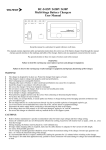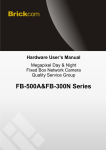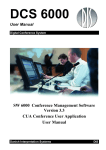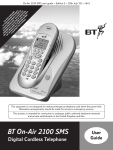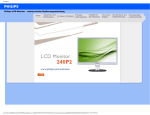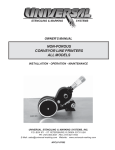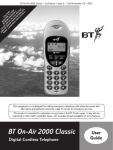Download Cooled Incubators Series 1A, 2, 3 & 4
Transcript
Cooled Incubators Series 1A, 2, 3 & 4 Programmable Instruction Manual 1 of 31 01/12 CONTENTS Section 1: 1.1 1.2 1.3 1.4 1.5 4.0 4.1 4.2 4.3 4.4 5.1 5.2 5.3 6.1 6.2 6.3 6.4 6.5 6.6 2 of 31 21 22 22 22 23-24 Maintenance & Repair Equipment Ratings Replacement of Fluorescent Lamps (When Fitted) Routine Maintenance Section 6: 10 11 11 11 12 13-14 15 16 16 17 18-20 Optional Extras Where Fitted - All Models Interior Illumination Automatic Defrost High/Low Alarm Option Inner Perspex Door Chart Recorder Section 5: 8 8 9 9 Programming Guide and Examples Function Overview Getting Started Program Run Mode Display Functions Example Program Programmer Function Map Function List (Level P) Programmer Memory Allocation Table Memory Full Indication Programming Examples Quick Programming Guide Section 4: 3 4-6 7 7 7 7 7 Initial Examination and Installation Commissioning Controls Temperature Controller Indicator & Control Layout Section 3: 3.0 3.1 3.2 3.3 3.4 3.5 3.6 3.7 3.8 3.9 3.10 Page No. List of Models General Details Introduction Construction Temperature Control Cooling Air Flow Section 2: 2.1 2.2 2.3 2.4 General Description 25 25 25 Guarantee Terms & Conditions for LMS Guarantee Spares, Servicing & Repairs Contact Decontamination Notice Fax Back Guarantee Registration LMS Services Application for Servicing 26 27 28 29 30 31 01/12 Instruction Manual for LMS Cooled Incubators Series 1A, 2, 3 & 4 Series 1A Models 80NP 120NP 201NP 280NP 76 litre capacity - 120 litre capacity - 201 litre capacity - 272 litre capacity Series 2 Models 210NP 220NP 230NP 240NP - 135 200 290 420 litre litre litre litre capacity capacity capacity capacity Series 3 Models 100NP 200NP 300NP 400NP - 90 litre capacity - 227 litre capacity - 290 litre capacity - 450 litre capacity Series 4 Models 600NP 1200NP 3 of 31 - 600 litre capacity - 1200 litre capacity 01/12 We thank you for purchasing a LMS Cooled Incubator, which we trust, will give you many years of satisfactory service. Manufactured in the United Kingdom using the finest materials and modern production techniques your Cooled Incubator has already undergone extensive testing in our factory. For correct operation it is essential that you observe the operating and maintenance instructions in this manual. LMS, established in 1965 and incorporated in 1979, is a company specialising in the manufacture and servicing of laboratory equipment, trading principally in the United Kingdom and Europe as well as throughout the world. The business is structured into two main sectors: • • Specialist Manufacture of temperature controlled cabinets Established third party Service, Maintenance & UKAS Accreditations Manufacture Specialist manufacture of temperature controlled cabinets with an extensive range of applications for the testing of products, cultures, plant and insect life etc. over a wide and closely controlled temperature range. The design of the purpose built Cooled Incubator facilitates the addition of optional extras to provide greater flexibility for individual use, making it suitable for a wide range of applications including: Study of plants and insects Tissue Culture Seed germination and vernalisation Sample storage Fruit Fly culture Immunology Product shelf life tests Microbiology tests Service & Maintenance LMS Limited is an independent third party servicing company which, for over 40 years, has been providing laboratory engineering services to a wide range of organisations, covering most makes and types of laboratory equipment and instruments. The broad customer base covers such diverse operations as: the water industry, commercial, public health and research laboratories, hospitals, the dairy, food and drink industries, large and small dental, chiropody and veterinary surgeries etc. LMS Limited is also accredited by UKAS to provide on site accreditation on the majority of its calibration service. Among the services provide are: Periodic service and safety inspections Emergency breakdown cover Calibration services to traceable standards Preparation for insurance inspection UKAS Accreditation (covering: temperature, humidity, rotation, speed and timing) For a free no obligation quotation for any of the above please complete the details on the application for Service page and fax to: LMS LTD On 01732 450127 4 of 31 01/12 EXPLANATION OF SYMBOLS USED Electrical Earthing Point Electrical Hazard Warning (Mains Electrical Supply Within) Exhibited where an internal power socket is fitted Refrigeration Isolation Switch Auto Defrost On/Off Switch Weee Label Serial Number Label Serial Number Plate 5 of 31 01/12 General Safety Instructions The physical and chemical properties of your load should be carefully considered with regard to the effect this may have on the LMS Cooled Incubator. They are not internally sparkfree or explosion proof. Therefore solvents and/or chemicals which may form a flammable mixture together with air are unsuitable for these cabinets; otherwise considerable damage can occur. Transportation Series 1A & 2 If these cabinets have to be carried it is recommended that at least 2 people assist and that gloves should be used on all occasions. The cabinet should be kept upright. Series 3 & 4: These cabinets are supplied on pallets and it is recommended that these are moved by pallet truck or fork lift by competent persons, including someone to assist in stabilising the load. The cabinet should be kept upright. Serial Number Plate The Serial Number Plate contains the year of manufacture, in the following format: - xxxx/12xx = year of manufacture 2012 6 of 31 01/12 Section 1 1.1 INTRODUCTION The LMS programmable option for Cooled Incubators is controlled by a powerful versatile programmable controller which is designed to offer the highest functionality and will enable the user to set up and run a complex process relying upon the LMS reputation for accurate temperature control. The programmer function is able to control applications needing set point changes over time. Examples of this are ramp changes where a gradual rate of change can be set or step changes which are instantaneous. These can be separated by soak periods during which the process is held at a constant value. Each individual time interval of the program, or segment, together with its associated moving set point value, can be stored as a unique program. At the end of a sequence, a program can be arranged to repeat (or loop), either a specified number of cycles, or continuously. For safety reasons, three modes of recovery from power failure are available. These automatically re-start the program from the beginning, continue it from where it stopped or hold it, waiting for the user to re-start. Of course the controller can also be set manually for quick and easy single set point temperatures if required. 1.2 CONSTRUCTION The outer casing of all models in Series 1A, 2 and 3 is of sheet steel finished in white stoved enamel. Models in Series 1A have an internal liner of white pre-coated Aluminium. The internal liner of models in Series 2 is of a high impact vacuum formed plastic with a minimum of crevices, and all corners are radiused. Models in Series 3 have an unobstructed working space fabricated from brushed stainless steel complete with multi position plastic moulded shelf supports, which allow the three white plastic coated steel shelves to be randomly positioned to suit individual requirements. Series 4 models have both a stainless steel exterior and interior and are supplied with 5 stainless steel shelves (model 600) and 10 stainless steel shelves (model 1200). Foam insulation is used, to ensure maximum insulation against external ambient temperature. All ranges of LMS cooled incubators incorporate both a door lock and magnetic gasket with all control features being set into a control panel and positioned so as to minimise the risk of accidental alteration. 1.3 TEMPERATURE CONTROL The temperature control method utilises a programmable controller offering digital selection and readout of temperature. See section 2.3 for operation. 1.4 COOLING Cooling is provided by a hermetically sealed refrigeration system. All LMS Cooled Incubators comply with the latest CFC-free regulations. 1.5 AIR FLOW A full air flow system is used. The airflow being at low velocity but high volume. 7 of 31 01/12 Section 2 2.1 2.2. INITIAL EXAMINATION AND INSTALLATION COMMISSIONING 2.1.0 Please check the Tip N Tell indicator on the packaging to ensure the instrument as not been tipped or laid down. If the blue beads are showing in the top half of the indicator please refer to LMS Ltd. 2.1.1 Remove all packing materials. 2.1.2 Check for signs of external damage (this MUST be reported immediately to the Carrier and Supplier). 2.1.3 After the cooled incubator has been sited please allow 24 hours before switching on. 2.1.4 Check that the electrical supply details on the information Rating Plate, which is fitted to the rear panel, are in accordance with the available electrical supply. If correct please use the mains lead supplied, which you will find inside the cabinet with the user manual. 2.1.5 All cooled incubators are supplied with a 3 pin moulded plug, which if not suitable may be replaced by an electrician or other competent person. Connect conductors as follows: BROWN to live, BLUE to neutral, GREEN/YELLOW to earth. 2.1.6 Position the cooled incubator so that approximately 100mm of free space exists around the cooled incubator. 2.1.7 Adjust levelling foot or feet (depending on model) so that the cooled incubator is sited firmly. Lockable castors (where fitted) MUST be locked. 2.1.8 On Series 3 and 4 please ensure that the refrigeration switch, which is fitted on the rear panel on the right hand side, is in the ON position (down). 2.1.9 On Series 4 place the defrost tray in the rails provided underneath the cabinet. CONTROLS – Common to All Models 2.2.1 Fuse On Series 1A, 2 and 3 all models are fitted with an IEC fused socket, on Series 4 a 1.25" TYPE F cartridge fuse in a screw fitting carrier, both are located on the rear of the control compartment adjacent to the Serial Number plate on which the fuse value is indicated. 2.2.2 Non-Adjustable Overheat Protection Device This device is fitted within the air mixing chamber to safeguard the cooled incubator should a fault condition of overheating develop. Operation of this device will be indicated by the Red ‘safety’ neon light on the front panel being illuminated. In the event of this happening the cooled incubator must be switched off until the reason for the fault condition is established and the fault itself is rectified. 8 of 31 01/12 2.3 TEMPERATURE CONTROLLER LMS Programmable Controller The Digital Controller has been factory tuned for optimum performance. To obtain a manual set point temperature press and hold the * button and press either the ▲ or ▼ buttons as required, ▲ to increase temperature, ▼ to decrease. When the desired set point temperature is achieved, release the * button. The first line of the controller shows the actual temperature in the chamber and will soon start to change to the new set point. For full programming instructions please refer to ‘Section 3’ or use our quick programming guide at the end of Section 3. 2.4 INDICATOR & CONTROL LAYOUT Series 1A, 2 and 3 The Red ‘safety’ neon only illuminates when an over temperature fault condition occurs – see Section 2.2.2. The Temperature Controller display will be continuously illuminated whilst the cooled incubator is connected to a mains electrical supply. Series 4 The Red ‘safety’ neon only illuminates when an over temperature fault condition occurs – see Section 2.2.2. The Green neon light and Temperature Controller display will be continuously illuminated whilst the cooled incubator is connected to a mains electricity supply. 9 of 31 01/12 Section 3 PROGRAMMER INDEX Function overview B.1 Getting started B.2 Program run mode B.3 Display functions B.4 Example program B.5 Function map B.6 Function list B.7 Memory allocation table Memory full indicator At the end of a sequence, a Program can be arranged to repeat (Loop), either a specified number of Cycles, or continuously. Only one Loop can be included in a Program. When the program is running, the Display indicates progress through the sequence of segments, and can additionally be interrogated for further segment information. It is also possible to CALL an already existing program as a sub program that can be inserted as a segment of another program. To speed up Program configuration, several Edit functions have been provided so that individual Segments and Programs may be Deleted or Inserted, and an entire Program may be Copied and then Pasted into another that it will replace. B.8 For safety reasons, three modes of recovery from a power failure are available. These either automatically Re-start the Program from the beginning, Continue it from where it stopped, or Hold it waiting for a user re-start. B.9 Programming example B.10 Program edit example B.11 In addition to those settings that determine the segment profile, it is also necessary to set program start values, together with the preferred ramp rate time units for each individual program. Either one or both of the two auxiliary outputs can be configured as Event outputs. Engaging the Holdback feature will temporarily halt Setpoint ramping to allow the process temperature to catch up should it deviate by more than a pre-set amount during a Ramp segment. 3.0 FUNCTION OVERVIEW The Programmer function in Level P enables the instrument to control applications needing Setpoint changes over time. Examples of this are Ramp changes where a gradual Rate of change can be set, or Step changes which are instantaneous. These can be separated by Soak periods during which the process is held at a constant value. Each individual time interval of the program or Segment, together with it’s associated moving setpoint value can be stored as a unique Program and for example be represented by the diagram below. Setpoint Soak Step To afford maximum programming flexibility, memory is allocated dynamically, and not preallocated. This allows the user the freedom to configure a small number of long programs or a larger number of shorter ones, up to the permitted maximum of 126 Segments per program, and a limit of 31 Programs. Should these limits be exceeded, or the Programmer memory become fully used, the display will read ProG FULL. Programs can be planned using the Memory Allocation Table which details the memory requirements of individual segment types. During configuration a check can be kept on memory usage by interrogating the USEd feature of the display to give an instant reading of ‘percentage memory used’. Finally, once a program has been configured, it can be run from the run off/on/hold controls in Level P, and in addition a quick access run/hold toggle is directly available from the front panel. The Programmer Functions List describes the full range of available Settings for each Programmer Function together with their display mnemonic. The instrument is supplied with a suite of Factory Settings for each Function. These are shown in bold type. The Functions Map illustrates the relationship between the Functions and their Settings and provides a guide to the Keying Operations required to navigate around the menu when configuring or running a Program. Ramp 10 of 31 Time (Segments) 01/12 3.1 GETTING STARTED (PROGRAMMER) Run/Hold Toggle Feature Press Qt and hold for 3 seconds to hold the program. Press Qt again and hold for 3 seconds to run the program. Note: Level P is ‘read only’ while a program is active. To run a stopped program again press and hold the Qt to toggle RUN ON/OFF/ON again. New users should take a short time to study the following before starting to configure the first program, and may wish to take on board the following tips and suggestions. Program Mode Exit switch (ProG/Auto) Program Level 4. This standard feature of the instrument causes automatic exit from program mode after sixty seconds of Key inactivity. It is highly recommended that this setting be disabled and changed to ProG/StAy to ensure that adequate time is available for making unfamiliar adjustments. 3.3 DISPLAY FUNCTIONS Once the program is running, the display automatically tracks the progress of the program as it indexes through it’s sequence of segments. When it concludes it’s final instruction, the upper display alternates StoP with the Process Value and the lower display reverts to the instrument SP1 Setpoint. RAMP The upper display alternates between SPr and the moving Process Value while the lower display shows Target Setpoint. If Holdback is activated, the decimal point in the lower right corner of the upper display will be illuminated. Program Parameter List Listing the required Program Settings and Parameter Values segment by segment beside each Setting/Segment Number, and Program Display Mnemonic will reduce the risk of programming mistakes during the learning period. Memorise Basic Key Functions Please become familiar with the following Menu Navigation principles Hold both s and t for three seconds to enter or exit Program Mode. SOAK The upper display alternates between SoAK and the Process Value. The lower display reads the Target Setpoint of the current segment. STEP (not displayed) As this involves an instantaneous change of the Target Setpoint, this segment occupies zero time and the program immediately moves to the next segment. The lower display then registers the new Target Setpoint, with the upper display alternating in either SPr or SoAK mode according to the segment configuration. HOLD Key either Qs or Qt to view or change settings (follow vertical arrows). If the program is paused in HOLD, the upper display alternates between hoLd and the Process Value, while the lower display indicates the Target Setpoint of the current segment. Key Q and hold for three seconds to confirm Edit Functions. User Displays Key either s or t to view Functions (follow horizontal arrows). Note: Factory Settings appear in the lower display in each of the Functions illustrated in the Function Map. Program configuration When the PROGRAMMER function is entered at LEVL P, the Programmer is automatically presented in Configuration Mode, and the instrument display can be used to access and adjust the various FUNCTIONS. 3.2 Program Run Mode To run a Program from LEVL P, Press s once, then use Qs to select the required program number from the PrOG list. Press s again once then use Qs to select the run/on option. Press ts and hold for three 11 ofseconds 31 to exit configuration mode and run the program. With the program running, a further display function is available at any time. Press and hold Q Display shows Program Number Also press s once Display shows Segment Number Press s again Display shows number of loops completed if a loop function has been set. Press s again Upper display reads t.SP Lower display shows moving Ramp setpoint Or if in Soak Segment Upper display reads Sint (Soak interval) Lower display reads remaining Soak time Release Q To return display to Program Run mode 01/12 3.4 EXAMPLE PROGRAM TYPE TYPE TYPE TYPE TYPE TYPE TYPE TYPE TYPE SPR SOAK STEP SPR LOOP SPR SOAK STEP SPR SPRR SINT T.SP SPRR PCYC SPRR SINT T.SP SPRR 105 45 85 55 105 45 85 55 Temp T.SP 137 Soak Function Interval: 45 mins 1 T.SP T.SP T.SP 30 137 30 Ramp Function Rate, 105 deg/hour Target setpoint: 137 deg Step Function Target setpoint: 85 deg Ramp Function Rate, 55 deg/hour Target setpoint: 30 deg STOP 30 Loop Function Number of repeat program cycles: 1 SEG 1 SEG 2 SEG 3 SEG 4 SEG 5 SEG 1 SEG 2 SEG SEG 3 4 Time 12 of 31 01/12 3.5 PROGRAMMER FUNCTION MAP START HERE Press and hold t s for 3 seconds ENTER PROGRAM Paste only appears after a program is copied Copies the selected TUNE OFF To add new program, press s once program EDIT PSTE EDIT COPY SURE Q SURE Qs NO 3 secs 3 A copy of program 1 can be pasted into another program 1 3 secs PROG Q 3 secs Program 1 has been copied to program 3 PROG Q YES t PROG ADD Program RUN s OFF editing functions. Insert EDIT INS PROG Q 2 3 secs Another program has been Program 3 has been inserted into PROG 2 re-numbering existing PROG 2 to 3 deleted. Display shows next program down from top of list t LEVL 1 Program editing PROG 3 Qt Add new programs at top of existing menu functions. Delete Hold the program at current position in list LEVEL P and LEVEL A LEVL C LEVL P Q t LEVL A 13 of 31 s Q Start program when ‘on’ selected. This locks other options out Q s PROG 1 Q t USED 0 SURE 3 secs SURE Qs NO YES Program ‘off’ state s Select the required program number. Default: 1 PROG Q 2 3 secs Hold the program at RUN the point it stopped HOLD FAIL HOLD ST.V SP Continue the program To view existing If COMMS option fitted, LEVEL C appears between DEL Program 3 now appears PROG 2 programs 1 to 31 or full? EDIT RUN from where it stopped ON Q Reset the program at beginning s RUN OFF s Select program mode of operation Default: off FAIL Options: start program at main SP or process CONT Q s FAIL RSET SPRU 60 S variable s Power failure recovery position Default: reset Q Options: hours minutes s ST.V PV s Select the starting point of program after power up Default: PV Q s SPRU HOUR s Ramp rate time units adjustment Default: hour Memory used (%) 01/12 Event output options energise and de-energise for all combinations of SP2 & SP3. Insert new segment in the menu Delete a segment Event To add new segments press s once SEG ADD output EDIT DEL Q SEG Q 3 secs segment 2 becomes 3 SURE SURE Qs NO YES Add new segments at top of existing list SPR Call up another program Program re-cycles Segment 3 now appears in menu Step TYPE CALL Ramp SEG 1 s Set the segment to be adjusted Default: 1 2 3 secs Define the program number called Default: none SUB.P NONE SOAK Q s TYPE SPR E.OP 3E T.SP 9999 Soak time in minutes or continue Default: 10 E.OP 2E HB.V 150 SINT 10 Important note Up s button must be used after selecting the segment type to confirm it’s selection s To select operational mode of each segment Default: Ramp E.OP 2D Q SPRR 100 Adjusts ramp rate Default: 100 s s Q T.SP 0.0 Target set point adjustable over the unit’s range Default: Current main SP s Q HB.V s OFF s E.OP s ‘Hold back’ this function only appears for ramp operational once a value is set Default: off 14 of 31 E.OP 3D ‘Hold back band size adjustable 0.1 to 150 units TYPE STEP SEG Set Numbers of re-cycles 1 to 999 unless full. Or continuous Default: 1 PCYC 1 TYPE LOOP TYPE Soak To view existing segments 1 to 126 or full? s E.OP 2E3D Segment 3 deleted E.OP 2D3D SEG 2 Q SEG Q TYPE E,OP t SEG 3 E.OP 2E3E New segment now inserted into 2. Old 2 3 secs Returns to TYPE s EDIT INS E.OP 2D3E NONE s Event output - options only appear when SP2A or SP3A modes set to E.OP Default: de-energise 01/12 Function 3.6 FUNCTION LIST (LEVEL P) PROGRAMMER LEVEL P LEVL Press s or t to change Function TyPE Press Q s or Q t to change ProG Program number [1] Add new programs (1 to 31) run Run Program [oFF] Program not running on Run program hoLd Pause program Edit dEL Delete program Edit inS Insert new program Edit CoPy Copy another program Edit PStE Paste copied program [rSEt] Reset to program start Cont Continue from interruption hoLd Hold at interruption (User re-start) [PV] Process value SP Setpoint value [hour] Ramp rate adjust in hours 60 s Ramp rate adjust in minutes [1] Add new segments (1 to 126) k SPru SEG Press Q s or Q t to change Define segment type SPr SPrr Settings [Factory settings] shown in brackets Press s or t to change St.V Settings [Factory settings] shown in brackets P Access Level P from Level 1. Press and hold Q t Fail Sub-functions Power failure recovery mode Program start value Ramp rate time units Segment number Ramp to next target setpoint [100] Setpoint ramp rate Units per hour/minute (0-9990) (as set at Spru above) t.SP (Segment target setpoint) adjustable over instrument’s configured range hb.u Hold back [oFF] sets the permitted band size for the measured value to deviate from the ramp setpoint before the program is ‘held back’ waiting for the measured value to catch up. (0.1 to 150 units) v SoAK Sint StEP Hold setpoint for pre-set time [10] Soak time, adjust in minutes (cont.-1440) x 0.1 Step to new target setpoint (Set tSP as above) LooP PCYC CALL Sub.P Re-cycle program [1] Set number of program loops up to 999, or continuous loop k Call up another program by number to import into this program (nonE) Number of Program called at Call above Edit dEL Delete segment Edit inS Insert new segment v v Deleting a Program automatically re-numbers those programs with higher numbers 15 of 31 k Until memory full. See page 14 for further explanation. 01/12 Function E.oP Settings [Factory settings] shown in brackets Press s or t to change Press Q s or Q t to change Event output [nonE] 3.7 Memory Allocation Table Function can be applied to each segment independently to trigger an output at the start of that segment for the duration of that segment. Setting blocked unless either or both outputs SP2A or SP3A have been configured as an Event Output in Level 2 or Level A respectively. Segment type Memory required Ramp 4 Bytes Ramp with Holdback 5 Bytes Soak 2 Bytes Step 3 Bytes Loops (1-3) 1 Byte Loops (4+) 2 Bytes 2d SP2A de-energised to mark event Call 1 Byte 2E SP2A energised to mark event Event Output 1 Byte 3d SP3A de-energised to mark event Program Header 1 Byte 3E SP3A energised to mark event 2d.3d SP2A and SP3A de-energised to mark event 2E.3d SP2A energised SP3A de-energised to mark event 2E.3E SP2A and SP3A energised to mark event 2d.3E SP2A de-energised SP3A energised to mark event To Return to: Maximum capacity: 351 Bytes 31 Programs 126 Segments Examples: 1. 1 program of 58 Ramps and 58 Soaks 349 Bytes 2. 4 programs of 14 Ramps and 14 Soaks 340 Bytes 3. 31 programs of 2 Ramps and 1 Soak 341 Bytes 4. 2 programs of 10 Ramps, 10 Soaks, 2 Steps and 1 loop 136 Bytes LEVL P Press and hold t 3.8 Memory Full Indication To Read % Programmer memory used: USEd Press Q and t together in LEVL P / ProG 1 Should the programmer memory capacity be reached during program configuration, the display will show ‘FULL’ 1-100% 16 of 31 01/12 3.9 PROGRAMMING EXAMPLES SURE YES Q 3 secs PROG 2 Program 1 now pasted as Program 2 KEY Arrows drawn thus signify several key operations 3.10 Program Edit Function Make copy of Program 1 and paste as new Program 2 ADD PROG(next) EDIT COPY Q 3 secs PROG 1 17 of 31 PSTE SURE Q 3 secs Program settings for functions: run; FAiL; St.U and SPru not shown, are all set to Default Programmer functions shown as white characters on black background have Default settings NO RUN OFF KEY t OR s TO VIEW FUNCTIONS PROG 1 RUN OFF PROG 3 EDIT SEG ADD Program Segment Configuration See Program 3 illustrated on page 10 SEG 5 TYPE LOOP PCYC 1 SEG 4 TYPE SPR SPRR 55 SEG 3 TYPE STEP SEG 2 TYPE SOAK SINT 45 SEG 1 TYPE SPR SPRR 10 S T.SP 30 T.SP 85 T.SP 137 HB.V OFF 01/12 E.OP NONE 3.11 Quick Programming Guide DUAL TEMPERATURE CYCLING WITH LIGHTS ON In this program we will set the first temperature at 25ºC for a period of twelve hours with the lights on and the second temperature of 15ºC for a period of twelve hours with the lights off. This program will also run continuously. Press and hold both ▲ and ▼ buttons for 3 seconds Display will read LEUL P Press ▲ button, display reads Prog Add Press ▲ button until display reads Stu Pu Press and hold * and press ▲, display reads Stu SP Press ▲ button until display reads SEG Add Press ▲ button until display reads type SPR Press and hold * and press ▲ button until display reads type Step Press ▲ button until display reads t.SP 0.0 (current Set temp.) Press and hold * and press either ▲ or ▼ button until set-point is reached 25ºC Press ▲ button until display reads EOP 3D Press and hold * and press ▲ until display reads EOP 3E Press ▲ button, display reads SEG 1 Press and hold * and press ▲ button, display reads SEG Add 18 of 31 01/12 Press ▲ button, display reads type SPR Press and hold * and press ▲ button until display reads type SOAK Press ▲ button, display reads si.nt 10.0 Press and hold * and press ▲ or ▼ button to change time in minutes you wish program to run, display reads si.nt 720 Press ▲ button, display reads EOP 3D Press and hold * and press ▲ button, display reads EOP 3E Press ▲ button, display reads SEG 2 Press and hold * and press ▲ button, display reads SEG Add Press ▲ button, display reads type SPR Press and hold * and press ▲ button until display reads type Step Press ▲ button, display reads t.SP 0.0 (current set-point) Press and hold * and press either ▲ or ▼ button until set-point is reached 15ºC Press ▲ button, display reads EOP 3E Press and hold * and press ▲button until display reads EOP 3D Press ▲ button, display reads SEG 3 Press and hold * and press ▲ button, display reads SEG Add Press ▲ button, display reads type SPR Press and hold * and press ▲ button until display reads type SOAK Press ▲ button, display reads si.nt 10.0 19 of 31 01/12 Press and hold * and press ▲ or ▼ button to change time in minutes you wish program to run, display reads si.nt 720 Press ▲ button, display reads EOP 3D Press ▲ button, display reads SEG 4 Press and hold * and press ▲ button, display reads SEG Add Press ▲ button, display reads type SPR Press and hold * and press ▲ button until display reads type LOOP Press ▲ button, display reads PCYC 1 Press and hold * and press ▼ button until display reads PCYC Cont Press ▲ button, display reads EOP 3D Press ▲ button until display reads SEG 5 Press and hold both the ▲ and ▼ buttons together for 3 seconds to finish the programming. The display will return to show Actual and Set-point temperatures. To Run Program Press both ▲ and ▼ buttons together for 3 seconds, display reads LEUL P Press ▲ button until display reads run Off Press and hold * and press ▲ button, display reads run On Press both ▲ and ▼ buttons together for 3 seconds. The program will now run 20 of 31 01/12 Section 4 OPTIONAL EXTRAS WHERE FITTED ALL NON PROGRAMMABLE MODELS Control Panel 4.0 INTERIOR ILLUMINATION The interior illumination in these models is either controlled by the programmable controller, a 24 hour timer or 7 day timer depending on the item fitted to the control panel. Where no timer is fitted the controller will need to be programmed for temperature, time and lights on/off. Please refer to Section 3 or the quick programming guide. Models fitted with a 24 hour or 7 day time clock, require the segments to be adjusted, by pulling outwards or pushing in according to requirements. Each small segment represents 10 minutes on a 24 hour clock and 1 hour on a 7 day clock. To set the time initially, the clock hands should be turned clockwise only. Warning: Do Not Turn Hands Anti-Clockwise, as this may damage the clock When internal illumination switches on during the course of a cycle a slight rise in cabinet air temperature may be experienced. Where shelf lights are fitted, the rise will be more pronounced. 21 of 31 01/12 4.1 AUTOMATIC DEFROST Defrost Controller On Series 3, and optionally on Series 1A and 2, the cabinet is set to defrost every 6 hours, however the defrost controller will sense whether this is required or not. This controller is factory set for optimum use and is locked for protection against misuse. The defrost will give a slight rise in air temperature. If this rise should create any problems the defrost can be over-ridden by the defrost isolator switch on the rear of the back panel. On Series 4 the defrost occurs 4 times every 24 hours; duration is controlled by the ice build up internally. Please note that this controller will always display the figure 25 which is not to do with any temperature setting, this is merely a function setting. On Series 1A, 2 and Series 3 cabinets, any defrost water drains away to a tray mounted on the compressor. On Series 4 cabinets the water drains into a tray (supplied) which must be fitted in the special tracks mounted underneath the cooled incubator during installation. On all models this water evaporates harmlessly away. 4.2 HIGH/LOW ALARM OPTION The high/low alarm is a manually adjusted alarm option fitted to the instrument’s front panel. When fitted, this instrument supplements the digital control on the control panel with a contact thermometer, having a ‘Red’ upper limit pointer and a ‘Green’ lower limit pointer. This unit, being electro-mechanical, is not dependent on the normal control electronics and therefore will take over control in an emergency situation and maintain some form of control however coarse. In the event of an alarm condition, the following action will be taken: An audible alarm will sound and a secondary safety system will be activated, preventing the cooled incubator temperature from rising above or falling below the set alarm limits. To set up, ensure the pointer is wound well up in the case of the Red and down in the case of the Green. Set the control temperature by means of the digital controller and allow the incubator to stabilise at the required control point. Once this is achieved the pointers may be realigned as close as required to the set point after making due allowances for contingencies such as door opening etc. 4.3 INNER PERSPEX DOOR On incubators fitted with this feature and depending on the temperature difference between the inner working chamber and the space between the inner and outer doors, some slight distortion may occur to the Perspex door. 22 of 31 01/12 4.4 LMS CHART RECORDER Chart Paper Loading (see instruction below and illustration on the following page) 1. Remove front bezel by simultaneously pressing the retaining catches on each side. 2. To gain access to the chart paper cassette (1). First unlock the meter assembly by moving the locking lever (2) to the left and hinge outwards. Remove cassette by gripping firmly and pulling forward. 3. To load chart paper. First fit spindle (3) into new roll of chart paper. Clip roll into spindle retaining slots (4) on the cassette with the paper unrolling from the bottom. With the chart retaining bracket (5) lifted, feed the paper onto the sprocketed paper driving wheels (6). Close chart retaining bracket (5) and check paper feed by operating the manual feed wheel (7). 4. Replace cassette to engage chart drive gear (9) and close hinged meter assembly ensuring that the locking lever (2) latches closed. Caution: Take care not to damage the meter pointer or imprint stylus when closing the meter assembly. Operation (see figure below) Load chart paper as previously described. If required, the meter pointer/stylus (8) can be set to mechanical zero, with power off, by carefully turning the zero adjustment screw (11) 23 of 31 01/12 Note that the stylus may not move freely if the recorder is in the imprint section of its operating cycle with the stylus pressed against the chart paper. In this case the recorder chart motor should be operated for a few seconds until the imprint pressure is released, or the imprint drive wheel (12) can be manually rotated. The chart paper can be manually advanced by operating the manual paper feeding wheel (7) to set the desired zero time position. 24 of 31 01/12 Section 5 5.1 MAINTENANCE & REPAIR EQUIPMENT RATINGS 220/240V AC, 50 Hz. Up to 11 amps max. (see rating plate for details). The cooled incubator is designed to operate in an environment from +10ºC to +30ºC with a relative humidity from 5 - 85% RH non-condensing. Correct functionality of the cooled incubator or its safety features cannot be guaranteed if it is used outside these ratings. 5.2 REPLACEMENT OF FLUORESCENT LAMPS (WHEN FITTED) This must be carried out with the mains power switched off and by a competent person or engineer. Replacement lamps must be of the same size, wattage and voltage as originals. 5.3 ROUTINE MAINTENANCE It is recommended that the cooled incubator be inspected annually by a competent service engineer. The exterior and interior surfaces can be maintained in as new condition using standard non-abrasive or non-corrosive cleaners. Solvent based cleaners must not be used. Switch off during all cleaning operations. Allow drying before switching on. On Series 3 and 4 cabinets, the condenser should be brushed clean every six months. A complete defrost is recommended periodically depending on application To effect a defrost complete the following: A. B. C. D. E. 25 of 31 Switch off the cooled incubator at the mains switch. Allow the cooled incubator’s interior to attain ambient temperature by opening the door. If necessary, to speed up defrosting, start a heating cycle by setting the temperature to 35ºC and turning the refrigeration off. Allow the cabinet to completely dry-out inside before re-using (the process usually takes 24 hrs). Please ensure that the cabinet door remains open during this process. 01/12 Section 6 TERMS AND CONDITIONS FOR LMS GUARANTEE 6.1.1 Damage on delivery must be reported in writing immediately to LMS. 6.1.2 Equipment must be installed as per instructions. 6.1.3 Equipment must be used, serviced and maintained as per instructions. 6.1.4 Equipment must not be modified electronically or in relation to the refrigeration/air flow system unless LMS agreement is obtained. 6.1.5 Equipment malfunction under the terms of the guarantee must be reported to LMS. 6.1.6 LMS reserves the right to repair or replace damaged on delivery or malfunctioning equipment. 6.1.7 If it is found subsequently that the purchaser of the equipment was responsible for the damage/malfunction a charge will be made by LMS including any carriage charges. 6.1.8 If it is necessary to return equipment to LMS, the equipment must be packaged so as to prevent any damage and have a decontamination certificate (see 6.3) showing that the incubator has been made safe. 6.1.9 Guarantee is for 2 years and cannot be passed on to a subsequent equipment owner. 6.1.10 To register for the 2 year Guarantee please complete and return the enclosed Guarantee Card or the fax back form in this manual. In all cases please quote the following details: Model Serial No. These details may be obtained from the Serial Number plate on the back of the instrument. 26 of 31 01/12 FOR SPARES, SERVICING AND REPAIRS 6.2 Please contact: LMS Ltd. The Modern Forge Amherst Hill Riverhead Sevenoaks Kent TN13 2EL Tel. 01732 451866 Fax. 01732 450127 Email: [email protected] www.lms.ltd.uk 27 of 31 01/12 6.3 28 of 31 01/12 6.4 Fax Back Guarantee Registration To qualify for the 2nd year guarantee please fax this form duly completed to 01732 450127 Name: Address: Tel No: Contact Name: Date Purchased: Model No: Serial No: 29 of 31 01/12 6.5 LMS Limited is an independent third party servicing company which, for over 40 years, has been providing laboratory engineering services to a wide range of organisations, covering most makes and types of laboratory equipment. Among the services provided are: ¾ Periodic service and safety inspection. ¾ Calibration services to traceable standards. ¾ Emergency breakdown cover. ¾ Preparation for insurance inspection. ¾ UKAS Accreditation (covering: temperature, humidity, rotation, speed and timing). For a free no obligation quotation for any of the above services please complete the details on the following page and fax to: LMS LTD On 01732 450127 30 of 31 01/12 APPLICATION FOR QUOTATION TO SERVICE LABORATORY EQUIPMENT NAME OF APPLICANT: DATE: COMPANY NAME: ADDRESS: TEL NO: FAX NO: TYPES OF EQUIPMENT WHICH CAN BE SERVICED, CALIBRATED OR UKAS ACCREDITED BY LMS:AUTOCLAVE C02 INCUBATOR GLASS WASHER PUMP CENTRIFUGE DIGESTION BLOCK INCUBATOR STERILIZER CHILLER FREEZER LABORATORY FRIDGE WATER BATH CLIMATIC CHAMBERS FRIDGE/FREEZER LABORATORY OVEN COOLED INCUBATOR FURNACE MEDIA PREPARATOR PLEASE LIST THESE AND ANY OTHER TYPE OF EQUIPMENT YOU WISH TO BE CONSIDERED TYPE of EQUIPMENT MANUFACTURER MODEL YEAR SERIAL NO UKAS? PLEASE COMPLETE AND RETURN TO: LMS LTD, THE MODERN FORGE, AMHERST HILL, FAX: 01732 450127 31 of 31 RIVERHEAD SEVENOAKS, KENT TN13 2EL 01/12
































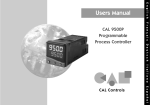
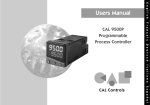

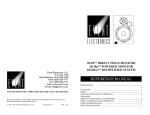
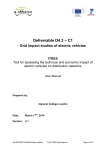
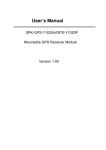


![sf-list [s]](http://vs1.manualzilla.com/store/data/005727021_1-5e70d84b679a2d9887789b982f459474-150x150.png)
